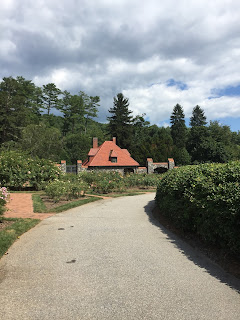The Old Philadelphia church of Christ was established around 1805 in Warren County, Tennessee, by the Price family of Asheville, North Carolina. This newly established congregation met in homes until 1830. In 1830, due to the rising popularity of Barton W. Stone's Restoration Movement, the need for a building was seen. The building was constructed along the Winchester Turnpike stagecoach road. This road is now known as the Vervilla Road. By 1840, the congregation at Philadelphia had become the center of the Restoration Movement's evangelistic efforts. The church grew due to its strategic location along the stagecoach road. Folks would often stop off and attend church before continuing on their way. The most well known preacher at Philadelphia was Jesse Sewell. Sewell was born in Overton County, Tennessee, and had preached all over the Upper Cumberland. He saw the potential for growth at the Philadelphia church. Between 1843, and 1860, Sewell grew Philadelphia into one of the largest congregations in the area. When the Civil War broke out, the Philadelphia community played host to soldiers from both sides. Both armies used the Winchester Road to travel. Sewell saw this as an evangelistic opportunity. When the war broke out, Sewell declared himself a pacifist, meaning he would not take sides. Throughout the entire war, he was able to go from one side to the other preaching. One account states that he actually walked into the Union Army's Army of the Tennessee, and preached to the men there, commanded by General William S. Rosecrans. When the war ended, the Philadelphia church continued to hold gospel meetings. Men who spoke at these meetings included David Lipscomb, and Tolbert Fanning. Under the leadership of Sewell, the Philadelphia congregation became mission minded. Many of the churches in Warren and surrounding counties were planted by members of the Philadelphia church. By the time the 20th century came around, many people began attending the congregations that had been established by Philadelphia. As a result attendance at Philadelphia began to dwindle. Folks did not want to travel all the way from McMinnville, Manchester, or Morrison to go to church. The establishment of churches in those communities made travel easier. The meeting house at Philadelphia was eventually turned over to the African-American group. They met there for the next forty years. During that time many prominent African-American preachers held gospel meetings there. Among these preachers were Marshall Keeble. Beginning in 1922, on the first Sunday in May, a homecoming known as "Old Philadelphia Day," was held. These days consisted of preaching, singing, and dinner on the ground. By 1940, many of these members had either died, or moved away. There was no way regular services could continue, so the congregation folded. The Philadelphia church building set empty for a number of years. In the early 1980s, members from churches in McMinnville grew concerned about the old building. James Ramsey, who was an influential African-American leader and elder at the East End Drive church of Christ in McMinnville became the driving force behind the restoration of the meeting house. In 1984, Ramsey died. Leonard "Abe" Thomas, and Clifford McClain eventually got a group together and began the preservation process. Funds came in from all over the United States to assist in the restoration. By the end of the 80's, the building was fully restored. In 1988, it was nominated and accepted into the National Register of Historic Places. Today the building is used for singings, and sometimes for gospel meetings. A cemetery lies nearby, interned therein include members of the Philadelphia congregation, as well as Jesse Sewell. The building serves as a reminder of both early settlement, and religious history. The Old Philadelphia church of Christ truly is a nationwide gem.
Old Philadelphia church of Christ sign.
Interior of the Old Philadelphia church of Christ.
Author's Note: For more information on the Old Philadelphia church of Christ, or the Restoration Movement in general, go check out the website: http://www.therestorationmovement.com/index.htm
Be sure and come back next week for another Throwback Thursday courtesy of Moore Historical Consulting. Whether your need is genealogy, historic litigation, preservation, or anything in between, put Moore Historical Consulting to work for you today!!



















